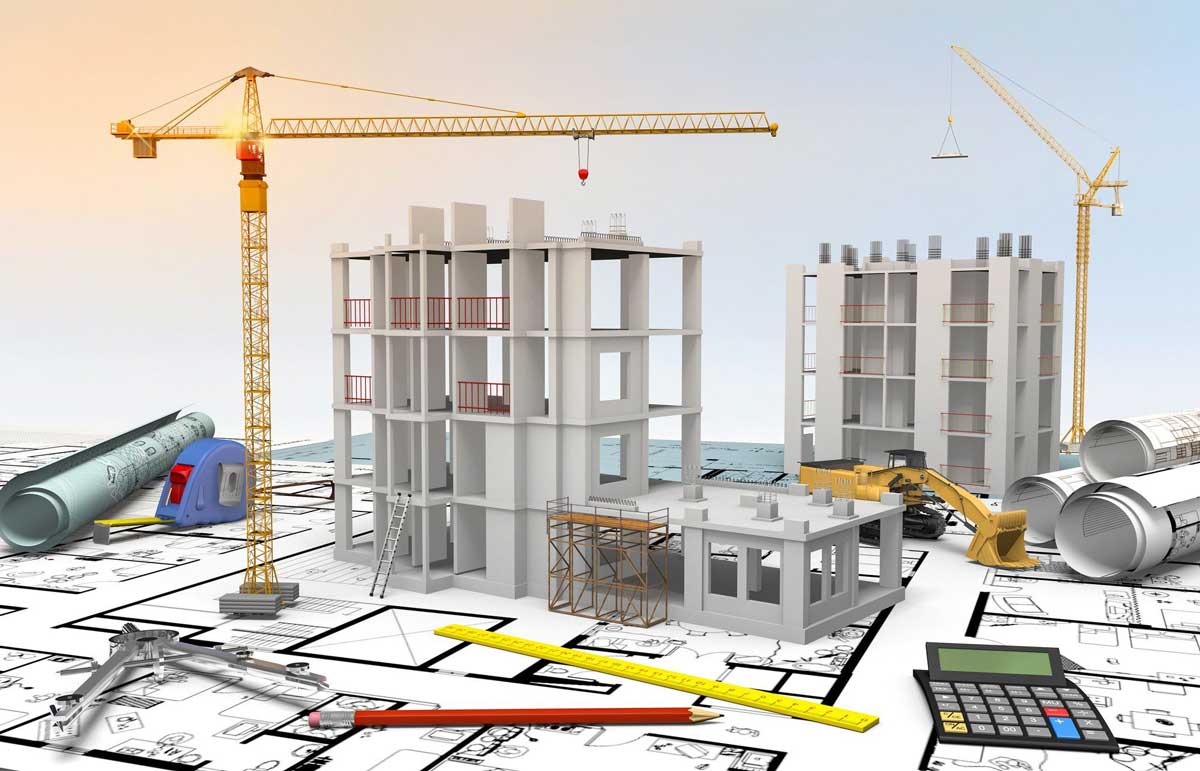The construction industry is a complex and ever-changing industry. In order to stay competitive, construction companies need to use the latest technology to improve their efficiency and productivity. One of the most important technologies that construction companies can use is design software tools.
Design software tools can help construction companies in a number of ways. First, they can help to improve the accuracy of designs. This is important because even small errors in a design can lead to costly mistakes during construction. Second, design software tools can help to speed up the design process. This is important because construction projects are often time-sensitive and delays can lead to additional costs. Third, design software tools can help to improve communication between different stakeholders in a construction project. This is important because everyone involved in the project needs to have a clear understanding of the design in order to avoid mistakes during construction.
There are a number of different design software tools available on the market. Some of the most popular tools include AutoCAD, Revit, and ArchiCAD. These tools offer a wide range of features and can be used for a variety of construction projects.
What are CAD and BIM?
CAD and BIM are both computer-aided design (CAD) software, but they have different purposes and features. CAD stands for computer-aided design, and it is a type of software that is used to create two-dimensional (2D) or three-dimensional (3D) drawings of objects.
CAD is a more traditional CAD software that has been around for longer. It is typically used for industrial design, mechanical engineering, and architecture. CAD software allows users to create precise drawings and models of objects, and it can be used to generate manufacturing data.
BIM stands for building information modeling, and it is a type of CAD software that is specifically designed for the construction industry. BIM software creates a digital representation of a building, including its physical and functional elements. This allows architects, engineers, and contractors to collaborate on a project and make changes to the design in real time.
What are the benefits of CAD?

Computer-aided design (CAD) is a technology that uses computer software to design and draft products. It has many benefits over traditional manual drafting methods, including:
Increased accuracy: CAD software allows designers to create more accurate designs by using precise measurements and calculations. This can help to reduce errors and improve the quality of products.
Improved efficiency: CAD software can automate many of the tasks involved in drafting, such as creating dimensions, adding annotations, and generating reports. This can save designers a significant amount of time and effort.
Enhanced collaboration: CAD software allows designers to share their work with others in real time. This can help to improve communication and collaboration between team members, and can lead to better designs.
Simplified prototyping: CAD software can be used to create 3D models of products, which can then be used to create prototypes. This can help to reduce the time and cost of prototyping, and can help to ensure that products meet design requirements.
Enhanced visualization: CAD software can be used to create realistic 3D visualizations of products. This can help customers to better understand the design of products, and can make it easier for designers to identify potential problems with designs.
Overall, CAD can offer a number of benefits to businesses and organizations in a variety of industries. By increasing accuracy, efficiency, collaboration, prototyping, and visualization, CAD can help to improve the design and development of products.
Here are some specific examples of how CAD is used in different industries:
Architecture: CAD software is used by architects to create detailed drawings of buildings and structures. This can help to ensure that buildings are structurally sound and meet all safety requirements.
Engineering: CAD software is used by engineers to design a wide variety of products, including machines, vehicles, and electronic devices. CAD can help engineers to create more efficient and effective designs, and can also help to reduce the time and cost of product development.
Manufacturing: CAD software is used by manufacturers to create detailed drawings of parts and assemblies. This can help to improve the efficiency of manufacturing processes, and can also help to reduce errors.
Automotive: CAD software is used by automotive manufacturers to design cars, trucks, and other vehicles. CAD can help manufacturers to create more aerodynamic and fuel-efficient vehicles, and can also help to improve safety features.
What are the benefits of BIM?

Building Information Modeling (BIM) is a process that uses digital models to represent physical and functional aspects of a building. BIM can be used for a variety of purposes, including design, construction, and operations.
There are many benefits to using BIM, including:
Improved accuracy and coordination: BIM models can help to improve the accuracy of design and construction by providing a single source of truth for all project information. This can help to reduce errors and clashes, and improve coordination between different trades and disciplines.
Reduced risks and costs: BIM can help to reduce risks and costs by identifying and mitigating potential problems early in the design process. This can lead to fewer change orders, rework, and delays, which can save money in the long run.
Increased productivity and efficiency: BIM can help to increase productivity and efficiency by streamlining the design and construction process. This can be achieved by automating tasks, improving communication, and reducing the need for manual documentation.
Greater sustainability: BIM can help to improve the sustainability of buildings by providing insights into energy use, materials, and waste. This information can be used to make more informed decisions about design and construction, which can lead to more sustainable buildings.
Enhanced communication and collaboration: BIM can help to enhance communication and collaboration between different stakeholders in a construction project. This can be achieved by providing a shared platform for project information, and by enabling real-time collaboration.
Disadvantages of CAD
CAD, or computer-aided design, is a powerful tool that can be used to create detailed and accurate drawings of objects. However, there are also some disadvantages to using CAD.
CAD is a comprehensive solution, but it comes with a big learning curve as it isn’t quite beginner-friendly. Most professionals have to invest hours in taking extensive courses that teach them how to navigate and leverage CAD’s features.
Moreover, CAD doesn’t consider some real-world issues that may impact your project. While BIM software can automatically flag design conflicts that may arise between an HVAC engineer and a structural engineer, CAD software may not automate such alerts.
Consistent usage of CAD may lead you to create similar designs as you repeatedly use the same presets and automated sizing tools. To avoid this, many people consider external opinions about their design ideas.
BIM disadvantages
BIM has many advantages, but there are also some disadvantages to consider.
Here are some of the disadvantages of BIM:
High upfront costs. BIM software can be expensive, and it can also require significant training for users. This can be a barrier for smaller businesses or organizations that are just starting to adopt BIM.
Data management challenges. BIM models can contain a lot of data, and it can be difficult to keep this data organized and up-to-date. This can lead to errors and inefficiencies.
Lack of interoperability. Not all BIM software is compatible with each other, which can make it difficult to share models and data between different stakeholders. This can lead to delays and misunderstandings.
Resistance to change. Some people in the construction industry may be resistant to change, and they may not be willing to adopt BIM. This can make it difficult to implement BIM on a project.
Security risks. BIM models can contain sensitive data, such as building plans and specifications. This data could be vulnerable to cyberattacks if it is not properly protected.
CAD (Computer-Aided Design) and BIM (Building Information Modeling) are both software used for designing and documenting buildings. However, there are some key differences between the two.
CAD vs. BIM: Which software should you choose for your business?
CAD (Computer-Aided Design) and BIM (Building Information Modeling) are two different approaches to building design. CAD is a line-based approach that is used to create 2D and 3D drawings. BIM is a more holistic approach that models the entire building, including its structure, systems, and components. CAD is relatively easy to learn and use, and it is less expensive than BIM software. However, CAD models are not as detailed as BIM models, and they do not provide as much information about the building. This can lead to problems during the construction process, such as clashes between different elements of the building.
In addition to the technical differences between CAD and BIM, there is also a cultural difference between the two approaches. CAD is often seen as a more traditional, engineering-driven approach, while BIM is seen as a more collaborative, design-driven approach. This cultural difference can be reflected in the way that CAD and BIM users interact with each other, as well as the way that they approach problems.
Despite these differences, CAD and BIM can be complementary technologies. CAD can be used to create the detailed drawings that are necessary for construction, while BIM can be used to create a more holistic view of the building that can be used for simulation and analysis. By using both CAD and BIM, construction firms can get the best of both worlds.




















